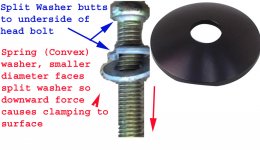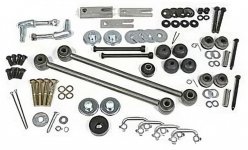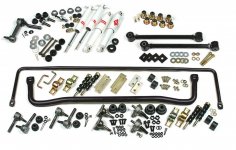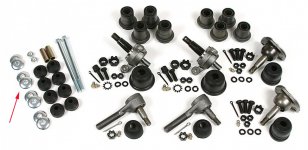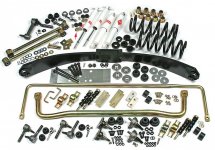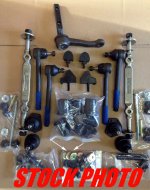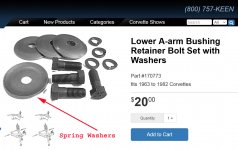Guys - apologise for mildly railroading this thread. I need some rear suspension advise please. Bought a pair of s/h trailing arms a couple of years ago that were ideal for wider wheels (parking brake cable mounts were moved to alternative position) - plan was to have them blasted and power coated before using them to replace my current trailing arms. I'm fairly sure that the rubber pivot bushes are past their best. The arms came with new Poly bushing kit which as been 'robbed' for bits (the seller decided to buy offset trailing arms)
My question is - in terms of lateral trailing arm movement (side to side) can anyone tell me if the poly bushes have less side to side movement (as compared with OEM rubber bushes)
Depends on how the Poly is made, if good quality then I would choose them over stock rubber
Rubber Versus Polyurethane
Which material is better?
As with most material selection questions, the answer is
“it depends on”. Both materials have their place, but which material is actually superior?
In the case of tires, seals, and some belts, rubber is the best material.
In the case of bushings, spacers, and high load components, polyurethane is the better choice.
Polyurethane has higher abrasion, cut, and tear resistance.
It can be made in a higher hardness rating, and it has better load bearing capacity.
Polyurethane is easily colored, in some cases chemical resistant, and much easier and cost-effective to mold into shapes and sizes.
Rubber by its soft nature allows for the absorption of vibrations and noise which may give the assumption that polyurethane isn’t as good for vibration dampening, but polyurethane is also an excellent energy absorber and can be made in very low
durometers.
In most cases polyurethane outperforms its rubber counterparts in replacement of many components including; bushings, pads, and many others. The parts will last longer, standing up to chemicals and oils, and compression and load.
Finally, polyurethane looks better than rubber. In some cases this will not matter, but a polyurethane part will always look much better than its rubber counterpart.
So in the end, if you are going for performance and quality, choose
polyurethane.

